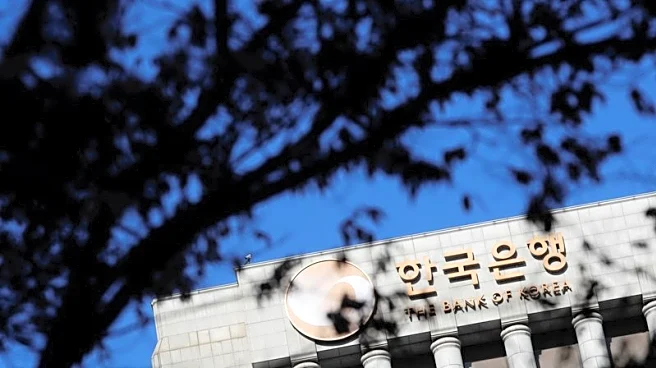What's Happening?
The Bank of Korea has decided to keep its benchmark interest rate unchanged at 2.5%, marking the fourth consecutive meeting without a change. This decision comes as tighter property rules are implemented
in Seoul to curb borrowing and address household debt concerns. The central bank cited stable inflation and an improving economic growth outlook as reasons for maintaining the current rate. However, it warned of increased volatility due to potential rate hikes from the U.S. Federal Reserve. The Bank of Korea is closely monitoring the housing market and household debt levels, which remain significant risks.
Why It's Important?
The decision to hold interest rates steady is crucial for South Korea's economic stability, particularly in the context of household debt and property market dynamics. By maintaining the rate, the Bank of Korea aims to prevent further escalation of housing demand and debt levels, which could destabilize the economy. The move also reflects the central bank's cautious approach amid uncertainties in trade relations with the U.S. and potential impacts of U.S. tariffs on exports. The decision may influence consumer confidence and spending, affecting domestic demand and economic growth.
What's Next?
The Bank of Korea's future actions will likely depend on developments in trade negotiations with the U.S. and the effectiveness of property market measures. If progress is made in trade talks and housing policies, the central bank may consider a rate cut to bolster economic growth. Additionally, the ongoing monitoring of household debt and property market conditions will be critical in shaping future monetary policy decisions. Stakeholders, including policymakers and businesses, will need to navigate these uncertainties and adjust their strategies accordingly.
Beyond the Headlines
The Bank of Korea's decision underscores the challenges of balancing economic growth with financial stability. The focus on household debt and property market regulations highlights the broader implications for South Korea's economic health. As the central bank navigates these issues, it must also consider the potential impact of external factors, such as U.S. monetary policy and global trade dynamics. The situation reflects the interconnectedness of global economies and the complexities of managing domestic economic policies in an international context.













